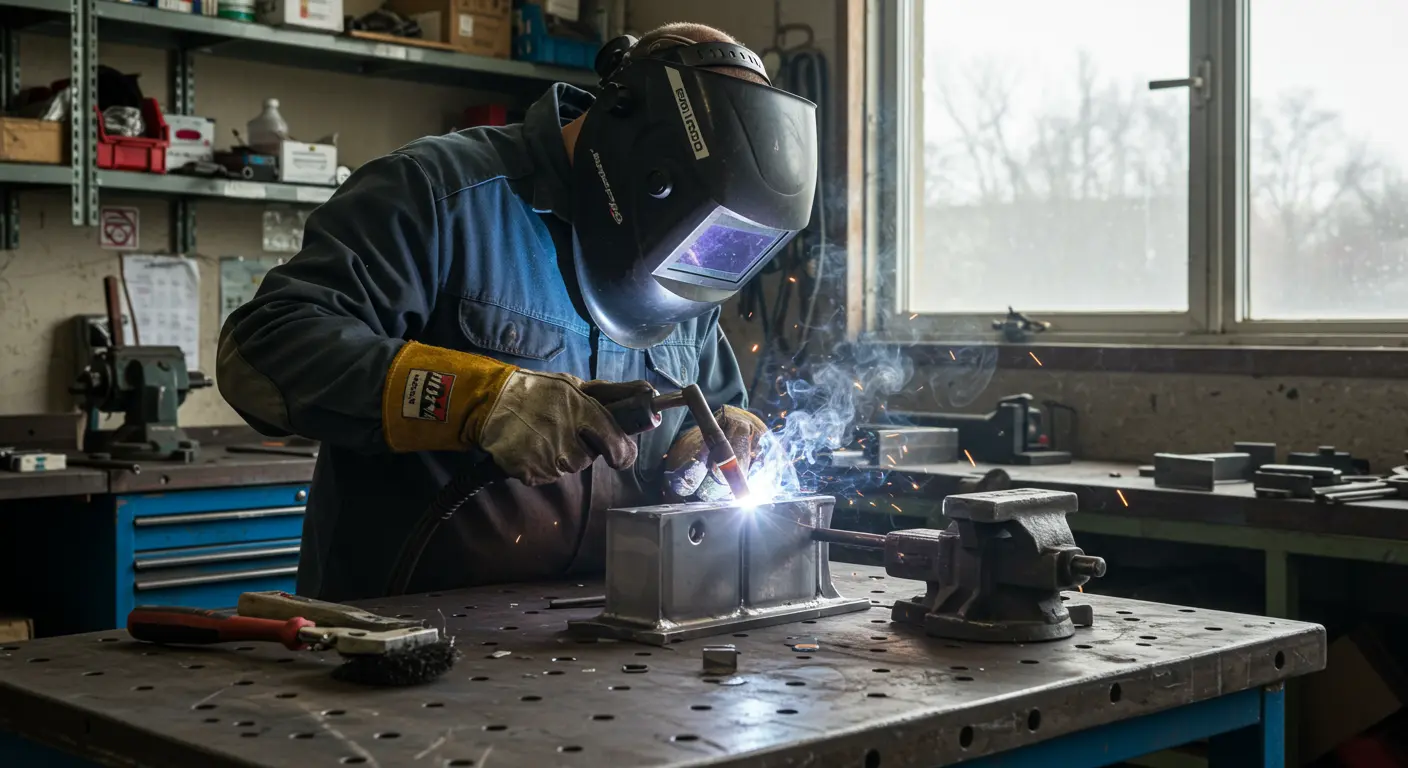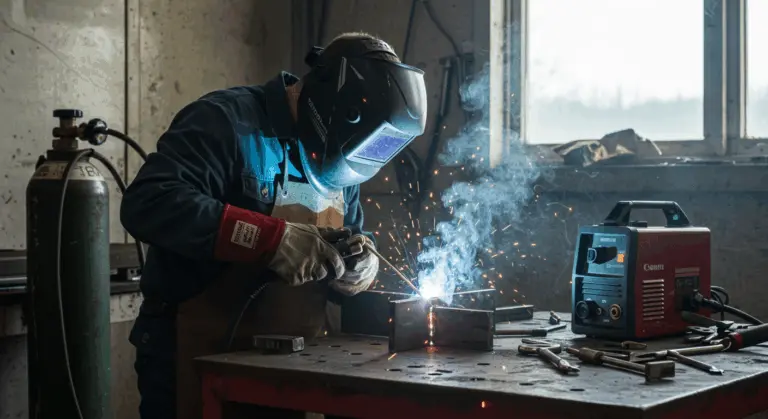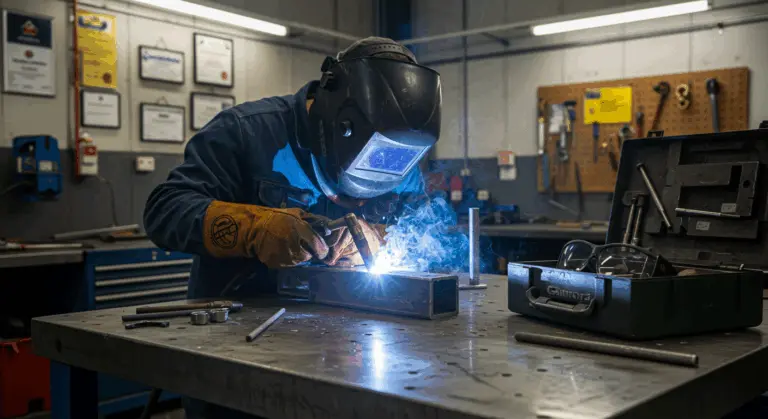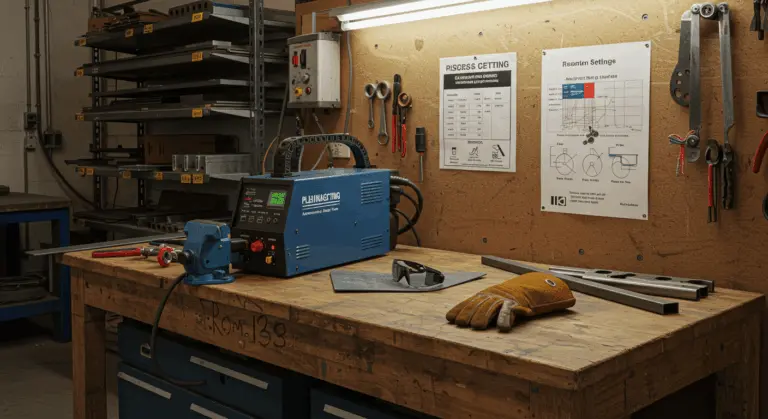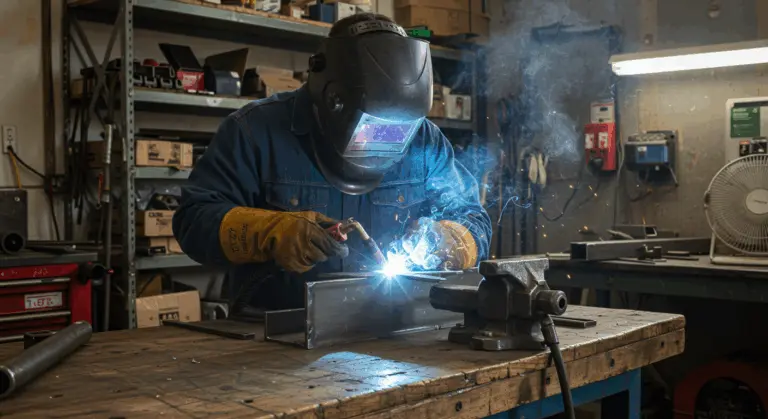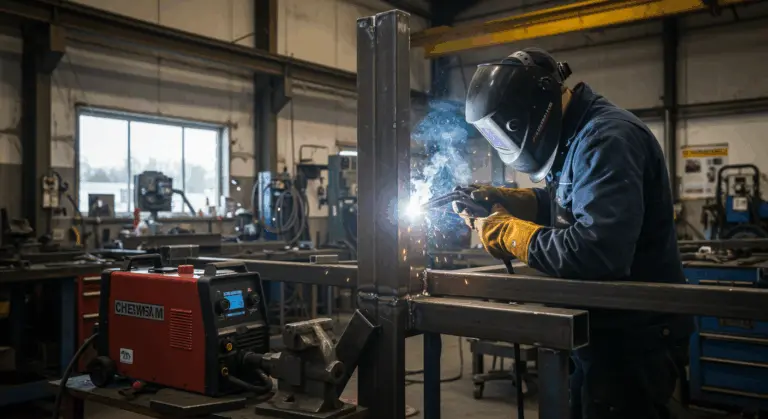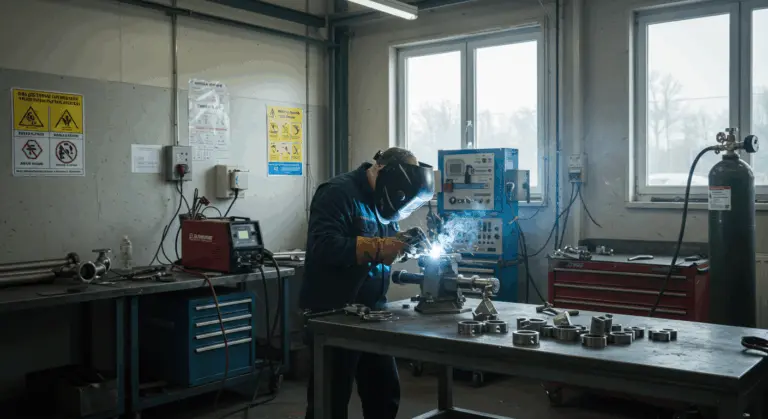Understanding Nickel Alloys – Types and Properties
Nickel alloys represent sophisticated engineering materials that are classified into two primary categories: solid solution and precipitation hardening alloys. Each category exhibits unique characteristics that directly influence their weldability and suitability for diverse industrial applications.
Solid solution alloys encompass pure nickel, Ni-Cu alloys, and straightforward Fe-Ni-Cr compositions. These materials are known for excellent weldability by preserving superior ductility within the heat-affected zone (HAZ) following welding operations. Their primary advantage is that They rarely demand post-weld heat treatment, streamlining fabrication while reducing costs.
Precipitation hardening nickel alloys, such as Ni-Cu-Al-Ti and Ni-Cr-Al-Ti compositions, develop their high strength through carefully controlled heat treatment processes. While delivering superior mechanical properties, these alloys present welding challenges. They exhibit particular vulnerability to cracking during and after welding, demanding meticulous technique and often specialized procedures.
Choosing between these alloy families depends on specific application demands. Where corrosion resistance and fabrication simplicity take precedence, solid solution alloys are usually the better choice. For applications demanding exceptional strength under extreme conditions, precipitation hardening alloys may be necessary despite their more complex welding requirements.
Challenges of Welding Nickel Alloys
Welding nickel alloys involves several significant challenges that demand specialized techniques and meticulous attention to prevent costly defects.
One of the most serious problems in nickel alloy welding is their extreme sensitivity to contamination. Even trace exposure to elements such as sulfur, phosphorus, lead, zinc, cadmium, tin, boron, silver, and bismuth can cause severe weld defects. These low-melting-point elements are particularly problematic as they can cause hot cracking in both the weld metal and the heat-affected zone (HAZ), with the latter being more common.
Porosity is another major problem. Gases like oxygen, nitrogen, or hydrogen become trapped within the weld pool, creating voids. Surface oxides compound the problem—their elevated melting points allow them to persist as solid particles, ultimately becoming strength-reducing inclusions in the finished joint.
Post-weld complications include stress corrosion cracking and heat treatment cracking. These issues often necessitate careful pre-heating procedures and post-weld thermal stress relief to maintain the integrity of the welded component.
Welding components with varying thicknesses or demanding exceptional aesthetic quality introduces additional complexities. The pressure for high-speed production further complicates matters, creating tension between efficiency demands and quality requirements when working with these sensitive materials.
Porosity in Nickel Welds – Causes and Solutions
Porosity is one of the most common defects in nickel alloy welding—manifesting as tiny gas bubbles trapped in solidified weld metal. This troublesome phenomenon develops when gases—chiefly oxygen, nitrogen, and hydrogen—enter the molten weld pool during welding, only to get trapped during rapid solidification.
Several factors contribute to porosity formation:
-
Inadequate Shielding Gas: Leaks, improper flow rates, or environmental drafts can expose the weld pool to atmospheric gases.
-
Surface Contaminants: Moisture, oils, grease, paint, or rust can introduce hydrogen and other gases into the weld.
-
Poor Fit-Up: Gaps between the materials being joined can trap air that enters the weld pool.
Preventing porosity requires following several critical practices:
-
Thorough Cleaning: Remove all oils, greases, and other contaminants from surfaces using appropriate solvents and mechanical cleaning methods before welding.
-
Proper Shielding Gas Setup: Use pure argon, pure helium, or a controlled mixture. Verify the gas delivery system for leaks and maintain correct flow rates to ensure adequate coverage without creating turbulence.
-
Equipment and Environment Control: Regularly clean the gas nozzle, ensure a tight fit-up between parts, and avoid welding in drafty conditions.
-
Enhanced Protection: For sensitive applications, use a trailing shield or gas backing to provide additional protection from atmospheric contamination.
Through systematic attention to these factors, welders can greatly reduce or prevent porosity, producing stronger, more dependable joints.
Oxide Inclusions – How They Affect Weld Integrity
Oxide inclusions create a serious problem in nickel alloy welding, that can seriously damage weld integrity when inadequately addressed. This problem stems from a fundamental characteristic: surface oxides forming on nickel alloys possess substantially higher melting points than the underlying base metal.
During welding operations, these refractory oxides refuse to melt alongside the base metal, getting trapped in the weld pool. These solid particles generate discontinuities that function as stress concentrators, undermining both mechanical strength and fatigue resistance.
Beyond structural weakening, oxide inclusions routinely trigger lack-of-fusion defects. When oxide particles are present between weld passes or at the interface between the weld and base metal, they prevent proper metallurgical bonding. This creates weak points that are particularly vulnerable to failure under load or during service.
Preventing oxide inclusions requires more thorough surface preparation than most metals require—simple wire brushing is not sufficient. Effective methods include:
-
Mechanical Cleaning: Using methods like machining or abrasive grinding to completely remove the oxide layer.
-
Chemical Cleaning: Employing techniques such as pickling for critical applications to ensure a completely clean surface before welding.
Detecting oxide inclusions in completed welds through visual inspection alone is very difficult. This reality makes thorough prevention through meticulous surface preparation the most effective strategy for ensuring weld integrity.
Pre-Cleaning Methods for Nickel Welding
Proper pre-cleaning is the most important step in achieving successful nickel alloy welds. Given nickel’s extraordinary sensitivity to contaminants, comprehensive cleaning is essential for preventing catastrophic weld defects.
Commonly employed pre-cleaning methods for nickel alloys include:
-
Mechanical Cleaning: Effective methods include machining, which removes the entire surface layer, or grinding with dedicated aluminum oxide wheels. Abrasive cloths can be used for light contamination, but silicon carbide products must be avoided.
-
Chemical Cleaning (Pickling): This thorough method uses solutions typically containing nitric and hydrofluoric acids to remove oxides. It requires careful post-cleaning rinsing and neutralization.
-
Abrasive Blasting: This method, particularly for larger components, should use clean aluminum oxide media. Silica sand must be avoided to prevent silicon contamination.
Regardless of your chosen cleaning method, complete removal of all corrosion, scale, grease, oil, paints, marking inks, and other potential contaminants remains paramount. Special attention should be paid to removing any substances containing sulfur, phosphorus, lead, zinc, or other elements known to cause hot cracking in nickel alloys.
Timing matters critically—cleaning should occur immediately before welding. Should delays arise between cleaning and welding, protect parts from contamination. Extended exposure may necessitate re-cleaning before proceeding.
Filler Metal Selection for Nickel Welding
Selecting appropriate filler metal is critical for successful nickel alloy welding—the wrong choice can result in poor mechanical properties, diminished corrosion resistance, or outright weld failure. The general principle is to match the filler composition to the parent metal, though there are important nuances to this approach.
Most nickel alloy fillers incorporate small quantities of deoxidizers—titanium, aluminum, and/or niobium. These elements prevent porosity and cracking by scavenging oxygen and other gases that might otherwise become trapped within the weld. However, the specific filler selection depends on both the base metal composition and the service requirements of the welded component.
| Base Alloy Group | Common Filler Metal(s) | Primary Application/Notes |
|—|—|—|
| Pure Nickel (e.g., Nickel 200/201) | ERNi-1 | General purpose; contains titanium to control porosity. |
| Nickel-Copper (e.g., Alloy 400) | ERNiCu-7, ERNiCu-8 | ERNiCu-7 for general use; ERNiCu-8 for age-hardening strength. |
| Nickel-Chromium (e.g., Alloy 600) | ERNiCr-3, ERNiCr-7, ERNiCrFe-5 | For general use, high-temperature strength, or stress corrosion cracking resistance. |
| Nickel-Molybdenum | ERNiMo-2, ERNiMo-8 | ERNiMo-8 is useful for welding 9% nickel steels for cryogenics. |
| High Corrosion/Temp Range | ERNiCrMo-3 | Exceptional corrosion resistance from cryogenic to 1000°F. |
| Cast Irons | E-310-15 | Produces a ductile weld after carbon pickup from the base metal. |
Considering the substantial cost of nickel alloys and the mission-critical nature of many applications, consulting with welding engineers or metallurgists is highly recommended when developing procedures for specific nickel alloys.
Welding Process Selection for Nickel Alloys
Selecting the optimal welding process for nickel alloys requires careful consideration of material properties, joint design, and application requirements. Though most nickel alloys accommodate various welding techniques successfully, specific processes offer specific benefits for particular situations.
Several processes can be used, with gas-shielded methods being the most common:
-
TIG/GTA (Tungsten Inert Gas): The premier process for nickel alloys, offering precise heat control and high-quality, clean welds. It is ideal for root passes, thin materials, and applications requiring high aesthetic quality.
-
MIG/GMA (Metal Inert Gas): Provides higher deposition rates than TIG, making it suitable for thicker sections and production welding. It requires more operator skill to match TIG quality.
-
MMA/SAW (Manual Metal Arc): A versatile flux-shielded process often used for field repairs and in situations with limited access. Proper electrode handling is critical to prevent moisture absorption.
-
SAW (Submerged Arc Welding): A high-deposition process generally restricted to solid solution alloys. It requires careful flux selection to avoid contamination.
-
Advanced Processes: Newer techniques like pulsed MIG, laser, and electron beam welding offer specialized benefits, such as minimal heat input and high precision.
Given the technical complexity and substantial cost of nickel alloys, developing comprehensive, well-documented Welding Procedure Specifications (WPS) is essential. Consultation with welding engineers is strongly recommended to ensure the selected process meets all corrosion and mechanical requirements.
TIG Welding Nickel Alloys – Best Practices
TIG welding (GTA) is often the preferred method for nickel alloys, thanks to its precision and control—yet achieving optimal results requires following specific best practices. The process begins with proper equipment setup and material preparation.
Electrode selection and preparation are important for TIG welding nickel alloys. Use thoriated (2% thorium) or lanthanide tungsten electrodes, which provide excellent arc stability and longevity. Grind the electrode to a sharp point with a 20-30° taper—this ensures optimal arc control while preventing tungsten inclusions.
Heat management is critical when TIG welding nickel alloys. Employ the lowest practical amperage that still delivers adequate fusion—excessive heat causes distortion, grain growth, and increased risk of cracking. For thicker sections, consider using pulsed TIG welding to reduce overall heat input while maintaining adequate penetration. Ensure proper interpass cooling on multi-pass welds to prevent heat buildup.
Shielding gas selection is important for weld quality. Pure argon (99.995% minimum purity) works well for most applications, while argon-helium mixtures (typically 75% argon/25% helium) enhance wetting and penetration on thicker sections. Maintain a gas flow rate of 15-20 CFH (7-9 L/min) for standard applications, adjusting as needed based on joint configuration and environmental conditions. For critical applications, consider using gas backing or trailing shields to protect the root and cooling weld from oxidation.
Proper technique includes maintaining a short arc length (approximately 1/16 to 1/8 inch or 1.5-3mm) alongside consistent travel speed. The torch angle should be held at 15-20° from vertical in the pushing direction. Add filler metal at a shallow angle to the weld pool, keeping it within the protective gas shield. For multi-pass welds, thoroughly clean between passes to remove any oxide formation that could lead to inclusions or lack of fusion.
Following these best practices allows welders to achieve exceptional TIG welds on nickel alloys—characterized by minimal defects and optimal mechanical properties.
MIG Welding Nickel Alloys – Techniques and Tips
MIG welding (GMA) provides higher deposition rates than TIG welding, making it particularly advantageous for thicker nickel alloy components and production environments where efficiency is important. However, achieving quality results requires specialized techniques tailored to the unique properties of nickel alloys.
Mastering MIG process fundamentals is important for welding nickel alloys successfully. Spray transfer mode generally outperforms short-circuit transfer for nickel alloys, providing better fusion with fewer defects. To achieve stable spray transfer, use DC electrode positive (DEEP) polarity and set voltage and wire feed speed parameters above the transition current for the wire diameter being used.
Parameter optimization is important when MIG welding nickel alloys. Start with manufacturer recommendations for your specific filler metal, then make incremental adjustments while observing the arc characteristics and weld bead formation. For 0.045″ (1.2mm) nickel alloy wire, typical parameters might include 26–30 volts and 200–250 amps, though this varies by alloy type and joint configuration. The welding arc’s sound gives important feedback: smooth, consistent crackling signals proper parameters, while popping or irregular sounds require adjustments.
Proper torch technique remains critical to weld quality. Maintain a work angle of 5-15° from perpendicular in the pushing direction and a travel angle of 5-15°. Keep the contact tip-to-work distance consistent at approximately 3/4″ to 1″ (19-25mm). For thicker sections, consider using a weaving pattern with brief pauses at the edges to ensure proper sidewall fusion.
Shielding gas selection for MIG welding nickel alloys typically centers on argon-rich mixtures. Pure argon works well for many applications, while adding 1-2% oxygen can improve arc stability and wetting characteristics. For thicker sections, an argon-helium mixture (typically 75% argon/25% helium) enhances heat input and penetration. Gas flow rates should be maintained at 35-45 CFH (16-21 L/min), with higher rates sometimes needed in drafty conditions.
Wire feeding systems need special care when working with nickel alloys. Use drive rolls with U-shaped grooves rather than V-shaped to reduce the risk of wire deformation. Set drive roll tension to the minimum required for consistent feeding without wire slippage. For optimal feeding, use the shortest practical gun cable length and ensure it remains as straight as possible during welding.
Consulting experienced welders familiar with nickel alloys provides practical insights beyond textbook knowledge. Their practical experience with specific equipment and materials often provides techniques that can significantly improve weld quality and efficiency.
Welding Safety for Nickel Alloys
Welding nickel alloys has special safety requirements beyond those encountered with conventional materials. The combination of high temperatures, specialized filler metals, and the distinctive properties of nickel alloys requires additional safety considerations to protect both the welder and the integrity of the weld.
Thermal management is especially important when welding nickel alloys. These materials exhibit lower thermal conductivity than steel, causing heat to accumulate rapidly within the weld area. This characteristic requires welders to limit heat input and allow adequate cooling between passes or beads. Failure to manage heat properly not only compromises weld quality but also increases the risk of burns from unexpectedly hot materials.
Respiratory protection is particularly important when welding nickel alloys. Generated fumes contain nickel compounds classified as potential carcinogens. Always use appropriate local exhaust ventilation systems positioned as close as practical to the arc. When ventilation alone is insufficient, wear a properly fitted respirator with cartridges rated for welding fumes. For confined spaces or areas with limited ventilation, supplied air systems may be necessary.
Eye and skin protection requirements are more demanding when welding nickel alloys. The intense arc associated with these materials, particularly when using helium-containing shielding gases, produces stronger ultraviolet radiation. Use welding helmets with appropriate shade numbers (typically #12-14 for most nickel alloy applications) and ensure all skin is covered with flame-resistant clothing. Some individuals may develop contact dermatitis from nickel exposure, making gloves and full coverage particularly important.
Fire prevention requires extra care when working with high-temperature nickel alloys like INCOME 600—materials that retain their strength at elevated temperatures. Sparks and spatter from these materials can remain hot enough to ignite combustibles for longer periods than those from carbon steel. Maintain a clean work area free of flammable materials and have appropriate fire extinguishers readily available.
Material handling safety also is important. The substantial cost of nickel alloys often requires working with smaller, conserved pieces that may feature sharp edges—so cut-resistant gloves are necessary during handling.
Through understanding and addressing these specific safety concerns, welders can work safely while producing high-quality welds in nickel alloys—welds that preserve their intended corrosion resistance and mechanical properties.

